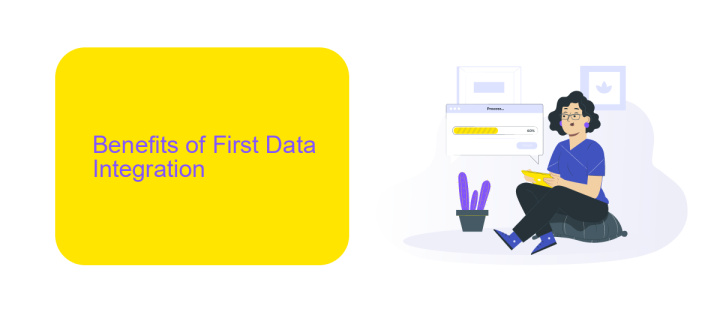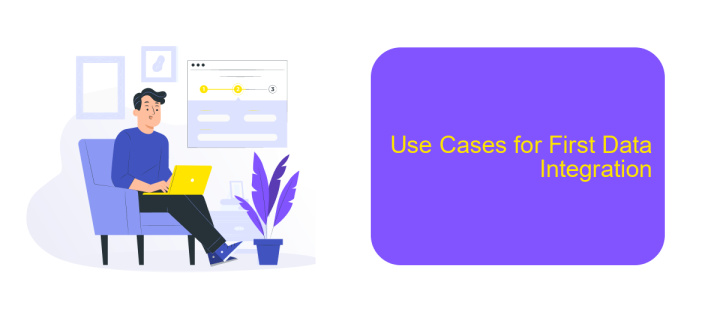First Data Integration
Data integration is a critical process for modern businesses seeking to harness the full potential of their information assets. By seamlessly combining data from diverse sources, organizations can achieve a unified view, enabling more informed decision-making and operational efficiency. This article explores the fundamentals of first data integration, its benefits, and best practices to ensure a smooth and effective implementation.
Introduction
Data integration is a crucial aspect of modern business operations, enabling organizations to consolidate data from various sources into a unified view. This process facilitates better decision-making, enhances operational efficiency, and supports data-driven strategies. Effective data integration ensures that businesses can access accurate, consistent, and up-to-date information across all departments.
- Combining data from multiple sources
- Ensuring data consistency and accuracy
- Streamlining business processes
- Supporting data-driven decision-making
One of the tools that simplify the data integration process is ApiX-Drive. This service allows for seamless integration between various applications and platforms, automating data transfer and synchronization. By using ApiX-Drive, businesses can save time, reduce manual errors, and ensure that their data is always up-to-date. The platform supports a wide range of integrations, making it a versatile solution for any organization looking to enhance its data integration capabilities.
Benefits of First Data Integration

First Data Integration offers numerous benefits that can significantly enhance business operations. By consolidating data from various sources into a single, unified view, organizations can achieve better data accuracy and consistency. This comprehensive data visibility enables more informed decision-making, as stakeholders have access to real-time insights and analytics. Moreover, streamlined data integration reduces the risk of errors and redundancies, thus improving overall data quality and reliability.
Additionally, the implementation of a robust data integration solution, such as ApiX-Drive, can simplify the process of connecting disparate systems and automating workflows. ApiX-Drive provides an intuitive interface that allows users to easily set up and manage integrations without the need for extensive technical knowledge. This not only saves time but also reduces costs associated with manual data handling and IT support. Ultimately, leveraging first data integration can lead to increased operational efficiency, enhanced customer experiences, and a stronger competitive edge in the market.
How to Integrate First Data

Integrating First Data into your system can significantly enhance your financial transactions and data management. To begin, you need to have a clear understanding of your system requirements and the specific features you want to integrate from First Data.
- Sign up for a First Data account and obtain the necessary API keys.
- Use an integration platform like ApiX-Drive to simplify the process. ApiX-Drive offers a user-friendly interface and pre-built connectors for seamless integration.
- Configure the API settings in ApiX-Drive by entering your First Data API keys and mapping the data fields according to your requirements.
- Test the integration to ensure that data is being transferred correctly and securely between First Data and your system.
- Monitor the integration regularly and make adjustments as needed to maintain optimal performance.
By following these steps, you can efficiently integrate First Data into your system, leveraging tools like ApiX-Drive to streamline the process. This will allow you to manage your financial data more effectively, ensuring smooth and secure transactions.
Use Cases for First Data Integration

First Data Integration is essential for businesses looking to streamline their operations and enhance decision-making processes. By integrating data from various sources, organizations can achieve a unified view of their information, leading to more informed and efficient strategies.
One of the primary use cases for First Data Integration is improving customer relationship management (CRM). By consolidating data from different customer touchpoints, businesses can gain a holistic understanding of their customers' needs and preferences, enabling personalized marketing and better customer service.
- Enhanced CRM through unified customer data.
- Optimized business operations via real-time data synchronization.
- Improved data accuracy and consistency across platforms.
- Facilitation of advanced analytics and reporting.
Services like ApiX-Drive can simplify the process of First Data Integration by offering automated workflows and seamless data transfers between diverse systems. This not only saves time but also reduces the risk of errors, ensuring that the integrated data is both accurate and reliable. Ultimately, leveraging such tools can significantly boost operational efficiency and drive business growth.


Conclusion
In conclusion, effective data integration is crucial for organizations aiming to streamline their operations and enhance decision-making processes. By consolidating data from various sources, businesses can achieve a unified view of their information, leading to more accurate insights and improved efficiency. The implementation of robust data integration strategies ensures that data remains consistent, reliable, and accessible across different departments.
Utilizing tools such as ApiX-Drive can significantly simplify the data integration process. ApiX-Drive offers a user-friendly platform that enables seamless connection between multiple applications and services, allowing for automated data transfers and synchronization. This not only reduces the manual workload but also minimizes the risk of errors, ensuring that the integrated data is both timely and accurate. As organizations continue to evolve in the digital age, leveraging such tools will be essential for maintaining a competitive edge and fostering innovation.
FAQ
What is First Data Integration?
Why is First Data Integration important?
What are the common challenges in First Data Integration?
How can I automate the First Data Integration process?
What are the best practices for First Data Integration?
Routine tasks take a lot of time from employees? Do they burn out, do not have enough working day for the main duties and important things? Do you understand that the only way out of this situation in modern realities is automation? Try Apix-Drive for free and make sure that the online connector in 5 minutes of setting up integration will remove a significant part of the routine from your life and free up time for you and your employees.

